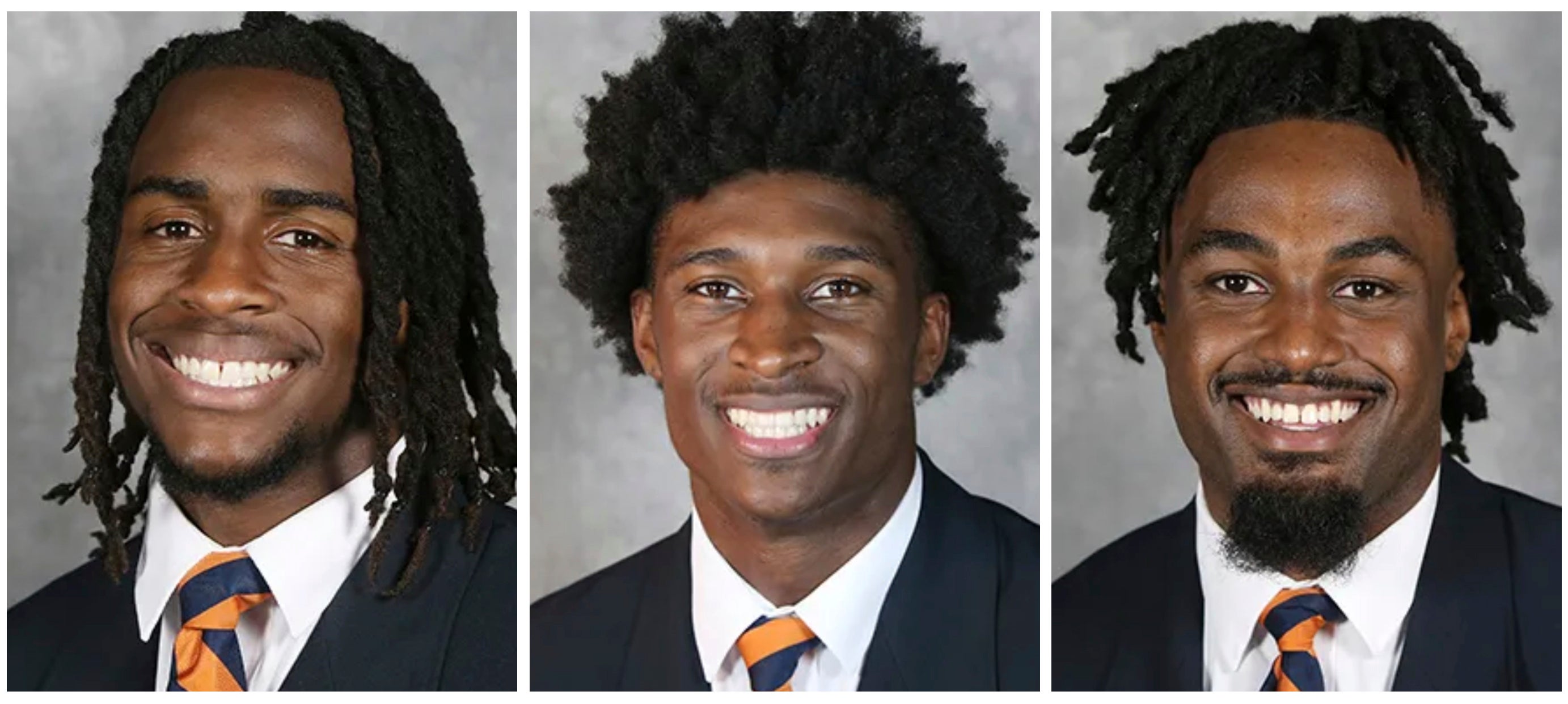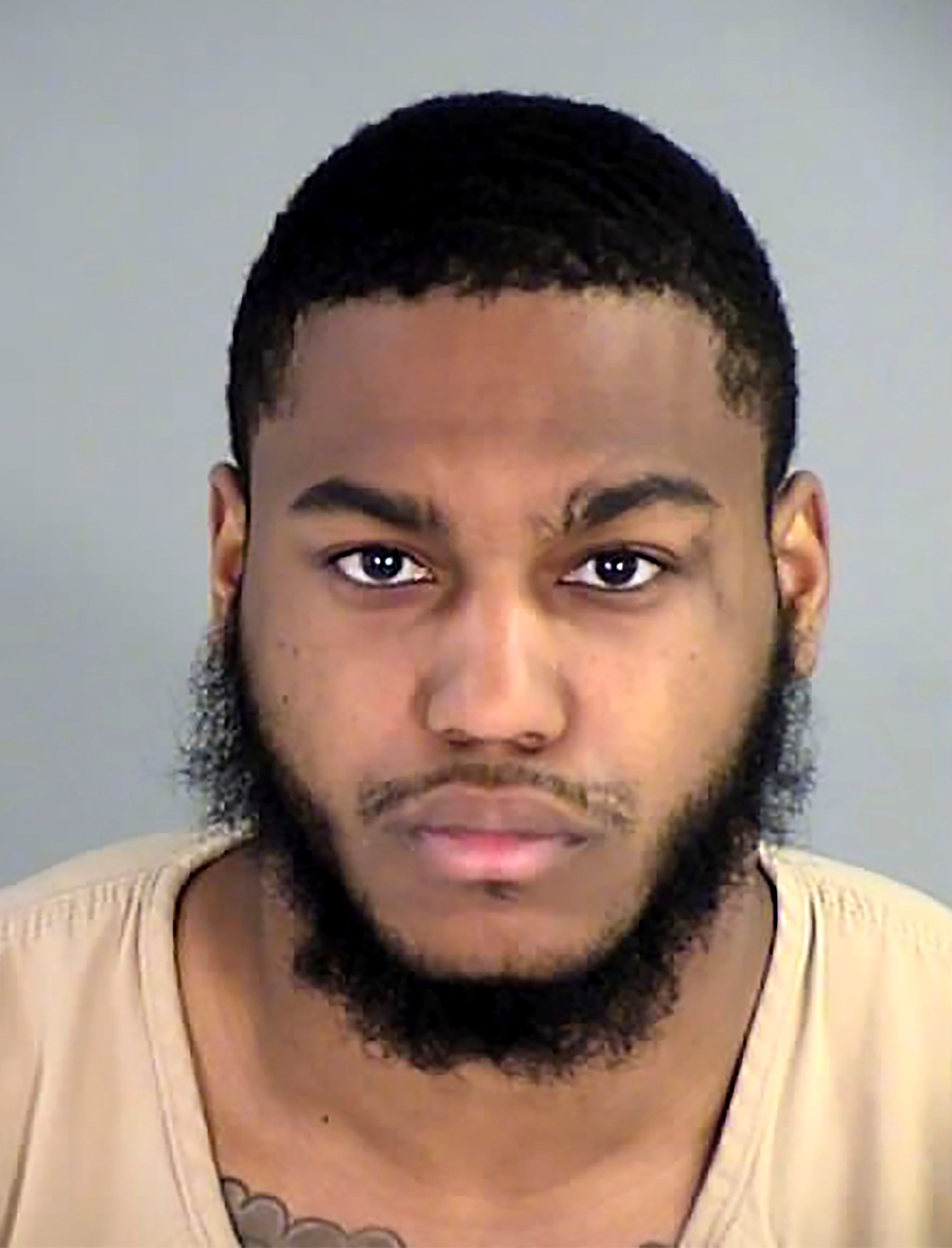
The three University of Virginia football players who were killed during what prosecutors have described as a “targeted” shooting on campus this week all died from gunshot wounds to their heads, the medical examiner confirmed.
The Office of the Chief Medical Examiner on Thursday released a statement to the Associated Press that described the cause of deaths for Lavel Davis Jr, Devin Chandler and D’Sean Perry, CBS News reported.
All three student-athletes, LaKeshia Johnson, the Central District Administrator for the medical office, died from apparent homicide, she told the AP.
Information released from the medical examiner’s office arrives as officials provided their most detailed account of Sunday night’s brazen shooting at the Charlottesville campus, which left three students dead and another two – students Mike Hollins and Marlee Morgan – wounded.
Mr Hollins, also a football player at UVA, was shot in the back and remained in hospital after undergoing two surgeries to remove the bullet from his stomach, while Ms Morgan, the sole person injured in the shooting who wasn’t on the school’s football team, was reportedly released from hospital Tuesday.
Christopher Darnell Jones Jr, 22, the suspected gunman in the attack, was arraigned on Wednesday for charges of second-degree murder, two charges of malicious wounding and other firearm related charges stemming from Sunday’s mass shooting.
Jones, who was denied bond on Wednesday, said little throughout the proceedings, apart from acknowledging that he was working to retain legal representation before the next trial on 8 December.
Details from the football players’ final moments aboard the charter bus that was returning from a field trip to the nation’s capital began emerging earlier this week when prosecutors argued that the attack on the players was “targeted”, as they revealed how one of the victims – Devin Chandler – was allegedly shot in the head while he was fast asleep.

Virginia State Police, who have officially taken over the investigation, have also provided a clearer account of the events that led to the brutal assault that was carried out on UVA’s main campus.
In a statement released from the force on Thursday, it described how the 22-year-old suspect had joined his peers for the field trip into Washington DC on Sunday night where the group had dined and seen a play at the Atlas Performing Arts Center.
Upon returning to campus and pulling into the parking garage shortly after 10pm local time, the former UVA football player “produced a weapon and began firing,” the news release said. The 22-year-old then continued to fire shots as he exited the charter bus, before fleeing the scene on foot and later escaping by car in a Dodge Durango.
“Investigators are still actively piecing together Jones’ movements between the time he fled the shooting scene and was apprehended in Henrico County. At this stage of the investigation, state police is not in a position to comment on Jones’ motives behind the shootings,” the news release said.

Authorities confirmed that a handgun was recovered in “relative proximity” to the scene of the crime and a search warrant of the suspect’s home later uncovered an additional two firearms – including a rifle and a handgun.
University President Jim Ryan confirmed Thursday that they are working alongside authorities to assist in the criminal investigation and that the school has tapped Attorney General Jason Miyares to conduct an external review of UVA’s response to the shooting and the efforts they undertook to prevent such an incident.
This arrives as the university has come under increasing scrutiny for what role they could’ve played in preventing a massacre of this nature, as it was revealed later this week that Jones had been on the radar of a multidisciplinary threat assessment team at the school for a potential hazing incident.
Through this initial probe, Student Affairs at the school learned that Jones had made statements about owning a gun and had failed to disclose that he had been tried and convicted for a misdemeanour involving a concealed weapon charge before arriving at the university, which is against policy.
The school said in a statement issued this week that on 27 October, they had “escalated his case for disciplinary action” but either due to human or technical error it didn’t get brought to the attention of the University Judicial Committee until Tuesday, two days after the shooting took place.
“After a tragedy of this nature, it is important for the affected institution to take a hard look at what circumstances led up to the event and, how the University responded in the moment,” said University Rector Whitt Clement in a letter to Mr Miyares this week.
“Once an external review commences, we expect it to be the central avenue by which we gain a deeper understanding about what led to this tragic event.”







